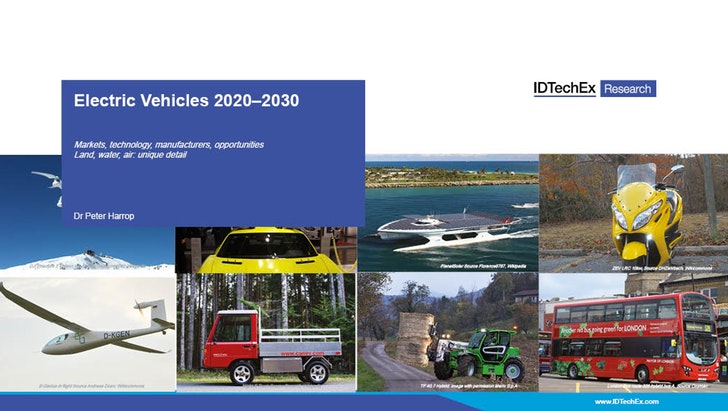The Lidar Revolution: Enabling Machines to See Our World
3D lidar is an optical perception technology that enables machines to see the world, make decisions and navigate. At present, machines using lidar range from small service robots to large autonomous vehicles.
Lidar technologies and markets are rapidly evolving, there are more than 100 3D lidar players worldwide. Each player claims to offer a unique, next-generation product that is superior to competing technologies. The technology landscape is cluttered with numerous options for every component in a lidar system.
IDTechEx identified four important technology choices that every lidar player and lidar user must make: measurement process, laser, beam steering mechanism, and photodetector. The beam steering mechanism is the most complicated and critical choice.
For more information please see the IDTechEx report "Lidar 2020-2030: Technologies, Players, Markets & Forecasts" (www.IDTechEx.com/Lidar).

Four important technology choices in designing or selecting a 3D lidar module. Source: IDTechEx
The technology choices made today will have immense consequences for performance, price and scalability of lidar in the future. The present state of the lidar market is unsustainable because winning technologies and players will inevitably emerge, consolidating the technology and business landscapes. 3D lidar players targeting the autonomous vehicles market have secured $1.9 billion in funding for product development.

25 automotive lidar start-ups that have announced funding of $10 million or more. Source: IDTechEx
The research on lidar was conducted by Dr Nilushi Wijeyasinghe, an IDTechEx analyst, as part of a project on autonomous vehicles that was directed by Dr Khasha Ghaffarzadeh, the Research Director of IDTechEx. The project builds on the expertise of IDTechEx in the transport, electronics and photonics sectors, which includes IDTechEx Research extensive network of contacts throughout the lidar supply chain: from materials suppliers to automotive OEMs.
This research delivers valuable insights for:
- Companies that require lidar or similar and competing sensors
- Companies that develop lidar
- Companies that supply components and materials for lidar
- Companies that invest in lidar
- Companies that develop other technologies for machine automation
The coverage of IDTechEx’s research is global and includes 34 players headquartered in Asia, 19 players headquartered in Europe, 48 players headquartered in North America and 5 players headquartered in the rest of the world (ROW). The research is focused on players who position themselves as automotive Tier 2 suppliers. The 3D lidar market analysis is primarily segmented by beam steering technology.

3D lidar players included in IDTechEx’s market analysis split by geographical distribution (top), position in the automotive supply chain (left) and beam steering technology (right). Source: IDTechEx
IDTechEx Research forecast model of the lidar market builds on their forecast model for autonomous mobility, which consider a peak car scenario from 2032 onward. The peak car scenario partly results from the wide adoption of autonomous shared mobility vehicles. The model of the lidar market considers how the following variables evolve during the forecast period for each beam steering technology segment: technology readiness level of lidar; lidar unit price; lidar cost per vehicle; lidar production volume; vehicle production volume; autonomous vehicle technology adoption; lidar technology adoption; lidar market share per autonomous vehicle segment.
The global market for 3D lidar in level 3+ autonomous vehicles grows to $5.4 billion by 2030 with MEMS lidar emerging as the largest market segment.

Examples of lidar configurations considered in IDTechEx Research market analysis and forecasts for level 3+ autonomous vehicles. Source: IDTechEx
